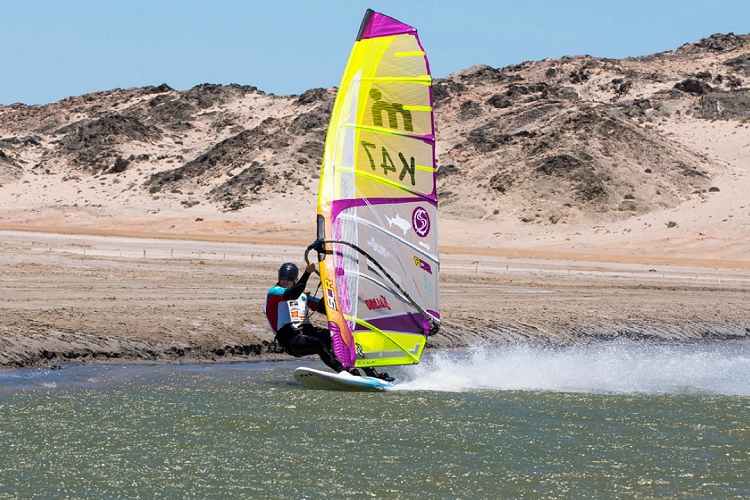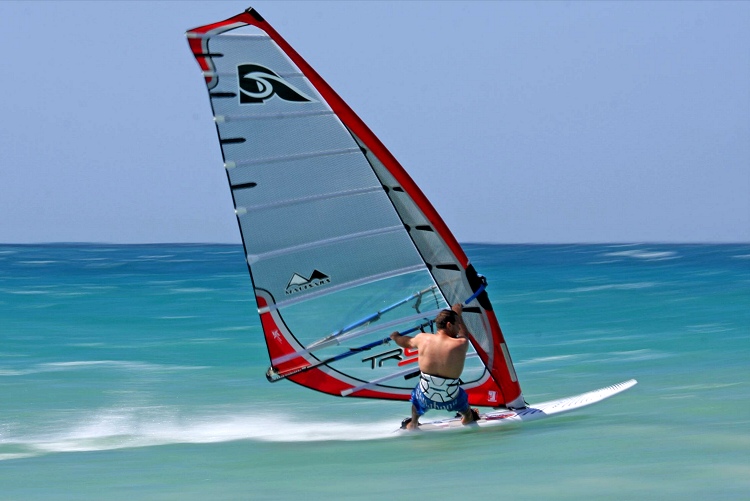The one sensation above all others that gets people hooked on windsurfing is the feeling of skimming over the water nearly to the point where they will gasp the iconic Titanic phrase "I'm flying, Jack!"
The theory behind planing in windsurfing is to transmit all the power obtained through the sail into the board as horizontally as possible so that it lifts out of the water and continues gliding over it.
This means that you need to get as much wind power into the sail as it allows first.
To achieve this, we need to bear away onto a broad reach (90 degrees plus from the wind) and sheet in while trying to keep the sail as vertical as possible.
Now that we have the power sorted out, we need to transmit it to the board horizontally.
To do this, you want to get the shoulders as far back as possible to hold the power of the sail.
At the same time, push your hips forward so that you are pushing your front foot into the board towards the nose.
Very important: do not just lean back and put your weight down on the board, as this will just sink the board into the water rather than out of it.
Focus on pushing forward with the front foot.
Usually, the trouble is getting and staying on; the plane can be challenging and exhausting, especially when you first have a go at it.
So, here is a breakdown of how to start planing the easy way.
How to Make Planing Easy
In the beginning, you will not be using the harness to start planing.
In this stage, it is important to keep the front arm straight to ensure that the sail is as vertical and your body as horizontal as possible.
Once we are sailing in the harness, we will be aiming for the same position, so it will help to have long harness lines, as this will allow us to get our body far away from the sail to push into the board horizontally.
Make sure you take full advantage of the harness and let the sail hold you when you lean back rather than hold on with your hands.
As you do it, you will have no alternative but to push forward with your front foot - the board will start planing.

The Step-by-Step Guide to Planing in Windsurfing
- Let your body fall backward to get your weight back;
- When you are far back enough, sheet in with the sail to avoid falling in and get power in the sail;
- Once the sail holds you, push your hips forward horizontally (or just keep your stretched body stiff) to get the board out of the water in one surge;
- Once it is planing, it is just a matter of keeping the power in the sail;
Equipment for Easy Planing
We can have excellent technique, but everyone will be stuck plowing through the water with the wrong gear.
With a heavy board, you will have a hard time getting it lifted out of the water as it sits deeper in the water and needs more speed than a light board to stay over the water when planing.
Once you are at the level where you are going to try to start planing, it makes sense to invest in a high-volume, lightweight board.
Check out the board size chart for a guide to what board is suitable for your weight and level.
Large Enough Sail
If other windsurfers of the same weight category are sailing with 6.0-meter sails, you will probably have a hard time planing with a 5.0-meter sail.
Take a look at the sails used by other people who are slightly above your level and rig up accordingly.
Words by Arne Gahmig | Windsurfing Instructor and Founder of HowToWindsurf101.com
